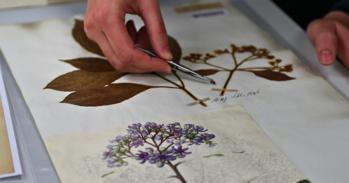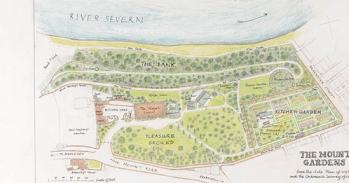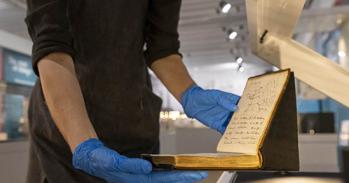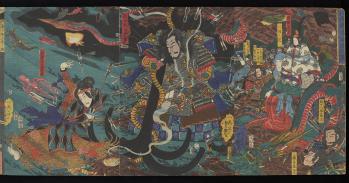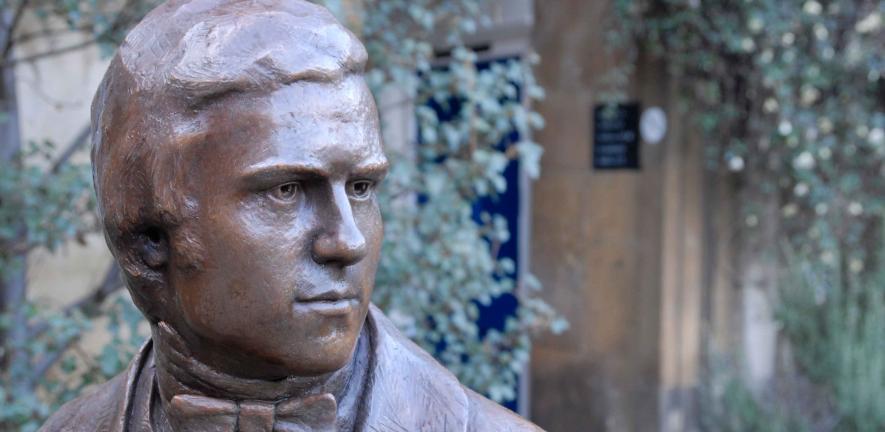
David Norman, Director of the Sedgwick Museum examines Darwin’s early years and his links with Cambridge.
David Norman, Director of the Sedgwick Museum examines Darwin’s early years and his links with Cambridge.
An observant and high-spirited child...
After just over two months of kicking his heels in Plymouth, the survey ship HMS Beagle was ready, the wind was in the East and Charles Darwin finally embarked on what would prove to be an epic voyage on the afternoon of 27 December 1831. This young man, for he was only 22 years old, had been appointed ‘naturalist’ and gentleman companion to Captain Robert FitzRoy. The voyage, commissioned by the Admiralty, was charged with making a cartographic survey of the South American coastline, as well as a detailed chronometric survey of longitude around the globe. An earlier voyage led by FitzRoy to South America had established, in his own mind, the need to have someone with the observational skills and understanding of a ‘naturalist’ – why Darwin? And why should Cambridge be so intent on commemorating this man’s achievements in 2009?
Origins
Charles Robert Darwin was born on 12 February 1809 in Shrewsbury to the prosperous doctor Robert Waring Darwin. An observant and high-spirited child, Charles was brought up in comfortable rural surroundings with intelligent, inquisitive and ambitious friends, family and traditions. His grandfather Erasmus was a leading light among the Lunar Society, a group of industrialists and intellectuals who did so much to found the industrial revolution.
Uninspired by the ‘by rote’ learning style of typical school lessons, Charles showed little scholarly aptitude (to the extent that he had the nickname poco curante, or ‘one who only cares about trifles’ from his school master). By the time he was 16 his father packed him off with his brother ‘Ras’ (Erasmus) to Edinburgh University to start a medical course. Though he enjoyed aspects of medical practice (accompanying his father on his rounds during vacations), the teaching methods, and in particular the barbaric nature of surgery at this time, repulsed Charles. He found increasing interest in other subject matter and began attending lectures and classes in mineralogy and geology, as well as zoological natural history. It became clear to Robert Darwin that his ‘ne’re-do-well’ son was unlikely to qualify in medicine if he continued in this vein, so following some serious father–son discussion Charles agreed to be transferred to Christ’s College, Cambridge, and read for an ‘ordinary degree’ that would prepare him for taking holy orders and (a safe and well-paid) life as a clergyman.
Family connections
Ras was already at Christ’s College, as was Charles’ second-cousin and soon-to-become lifelong friend William Darwin Fox (who was himself destined for a parsonage). Hensleigh Wedgwood, another cousin, was also at Christ’s, so there was a strong family connection behind the choice. The ordinary degree was not particularly scholastically demanding, and gave Charles considerable time to indulge hobbies and more diverse interests (hunting, food, wine and good companions of course; he was clearly a sociable, ‘red-blooded’ young blade), but on a more serious note he also became a great enthusiast of beetle-hunting (a passion encouraged by cousin Fox) and natural philosophy (science). The latter, undoubtedly stimulated by Ras as well as his experiences in Edinburgh, was greatly enhanced by being introduced to the youthful, polymathic, Professor John Stevens Henslow.
‘The man who walks with Henslow’
With classes in the morning, afternoons were a time of freedom from academic work for most undergraduates. However, in Darwin’s case, afternoons were often a time to stroll and talk with Professor Henslow – with whom a strong friendship developed. Clearly there was something special, as far as Henslow was concerned, about this young man. He invited Charles to his home, where he regularly held ‘open house’ for those wishing to discuss all facets of science (or ‘natural philosophy’ as it was then called) – and in doing so met and conversed with such luminaries as William Whewell, Adam Sedgwick, Charles Babbage and John Herschel.
Following the completion of his final examinations in January 1831, Darwin spent the remainder of his time in Cambridge being tutored by Henslow in different branches of science. By the summer Darwin was enthused by the idea of organising an expedition to Tenerife (following literally in the footsteps of the great explorer Alexander von Humboldt) and to assist himself in matters of fieldwork for such an adventure he accompanied Adam Sedgwick on a trip to north Wales in order to master basic geological interpretation and mapping skills.
The Beagle
Darwin’s plans were however dismantled by a far grander project. Henslow had been approached in the summer of 1831 by the Admiralty for advice about the choice of a gentleman companion and ‘naturalist’ to accompany Captain Robert FitzRoy on a voyage aboard HMS Beagle. The primary purpose behind the voyage was the detailed mapping of the coastline of southern South America, but FitzRoy had realised, after a previous voyage, that the observational and interpretative skills of a naturalist would greatly enhance the scientific productivity of the voyage. Though tempted to go himself, Henslow’s young wife and family prevented him taking the chance seriously, so in the end he suggested Charles Darwin – as someone who had the background, ability and potential to make the most of such an opportunity. As history shows, Henslow was spot on.
Dr David Norman (dn102@cam.ac.uk) is Director of the Sedgwick Museum, a palaeontologist in the Department of Earth Sciences and the Odell Fellow at Christ’s College. A major new exhibition entitled Darwin the Geologist, featuring the geological specimens collected by Charles Darwin on the voyage of the Beagle and donated to the Museum after his death, will open on 7 July 2009.
A permanent Darwinian connection with the Galapagos Islands
A new scheme has been launched that aims to create a permanent memorial to Charles Darwin in the form of a scholarly exchange between the University of Cambridge and the Galapagos Islands Charles Darwin Foundation. The Christ’s College-Galapagos Islands Trust Fund will promote the scientific understanding, conservation and long-term welfare of the islands, and was developed from discussions between the Director of Science at the Charles Darwin Research Station on the Galapagos and Dr David Norman of Christ’s College (during a geological expedition led by Dr Norman in 2007). With the University’s agreement and support from the Galapagos Conservation Trust, a Gala Dinner was held at Christ’s College on 12 February to begin to raise funds for the scheme. Professor Frank Kelly, Master of Christ’s College, said: ‘I am delighted that Christ’s is working with the Galapagos Conservation Trust to set up a much-needed research link between the College and the Galapagos Islands to continue the work of the young Darwin.’
This work is licensed under a Creative Commons Licence. If you use this content on your site please link back to this page.


